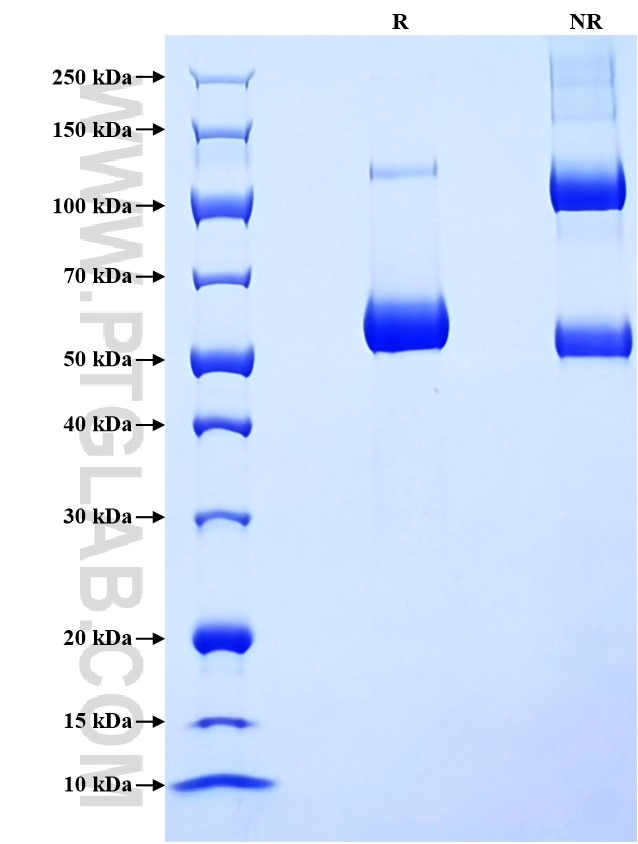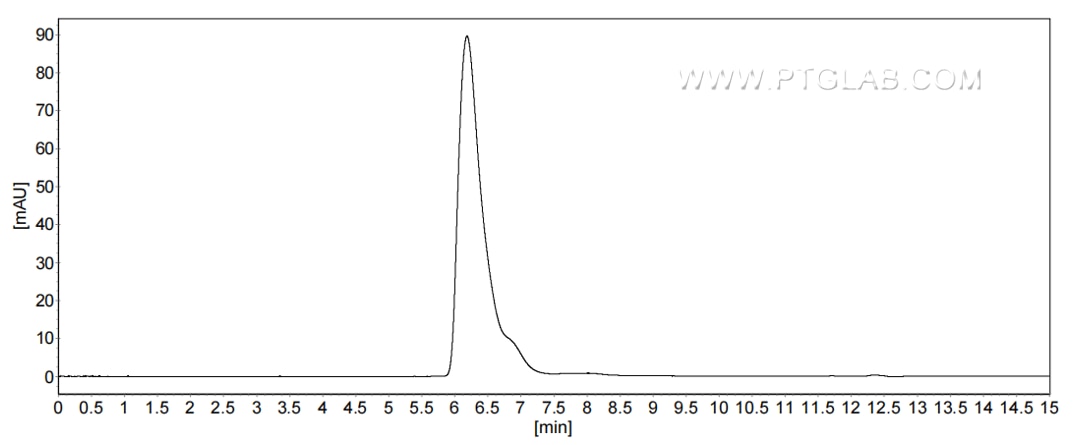Recombinant Mouse TNFSF11/RANKL protein (rFc Tag)(HPLC verified)
Species
Mouse
Purity
>90 %, SDS-PAGE
>90 %, SEC-HPLC
Tag
rFc Tag
Activity
not tested
Cat no : Eg1956
Validation Data Gallery
Product Information
| Purity | >90 %, SDS-PAGE >90 %, SEC-HPLC |
| Endotoxin | <0.1 EU/μg protein, LAL method |
| Activity |
Not tested |
| Expression | HEK293-derived Mouse TNFSF11 protein Arg72-Asp316 (Accession# O35235-1) with a rabbit IgG Fc tag at the N-terminus. |
| GeneID | 21943 |
| Accession | O35235-1 |
| PredictedSize | 54.8 kDa |
| SDS-PAGE | 52-65 kDa, reducing (R) conditions |
| Formulation | Lyophilized from 0.22 μm filtered solution in PBS, pH 7.4. Normally 5% trehalose and 5% mannitol are added as protectants before lyophilization. |
| Reconstitution | Briefly centrifuge the tube before opening. Reconstitute at 0.1-0.5 mg/mL in sterile water. |
| Storage Conditions |
It is recommended that the protein be aliquoted for optimal storage. Avoid repeated freeze-thaw cycles.
|
| Shipping | The product is shipped at ambient temperature. Upon receipt, store it immediately at the recommended temperature. |
Background
TNFSF11 also known as RANKL, is a member of the tumor necrosis factor (TNF) cytokine family which is a ligand for osteoprotegerin and functions as a key factor for osteoclast differentiation and activation. RANKL is produced by a diverse set of lineage-specific cells and is involved in a wide variety of physiological processes that include skeletal remodeling, lymph node organogenesis, mammary gland development, and thermal regulation. RANKL was shown to be a dentritic cell survival factor and is involved in the regulation of T cell-dependent immune response. The deficient mice exhibited defects in early differentiation of T and B lymphocytes, and failed to form lobulo-alveolar mammary structures during pregnancy.
References:
1. Giuliani N. et al. (2004) Exp Hematol. 32(8):685-91. 2. Hanada R. et al. (2011) J Mol Med (Berl). 89(7):647-56. 3. Onal M.et al. (2015) J Bone Miner Res. 30(5):855-68. 4. Danks L. et al. (2016) Ann Rheum Dis. 75(6):1187-95.


